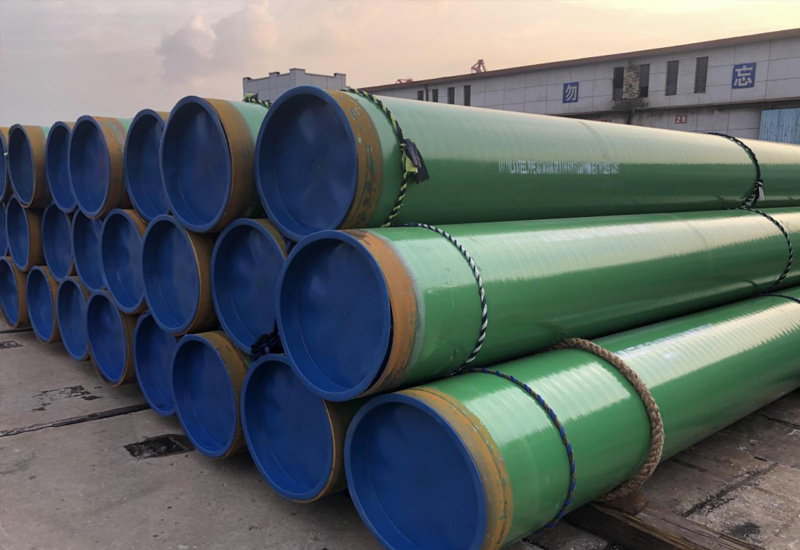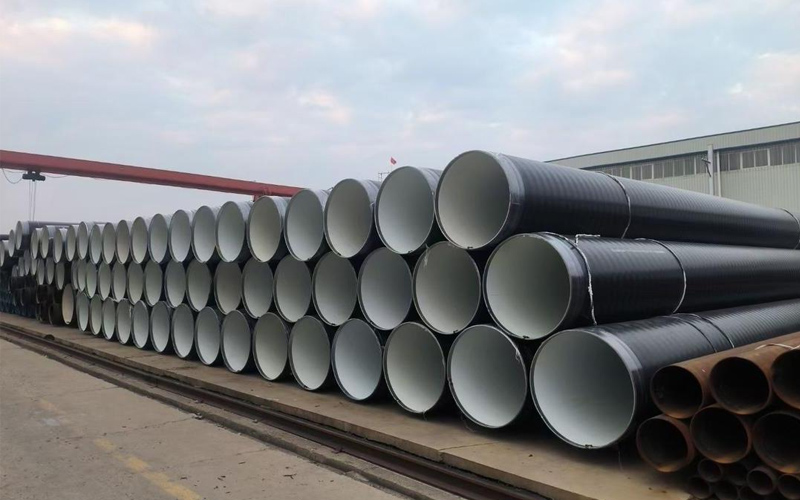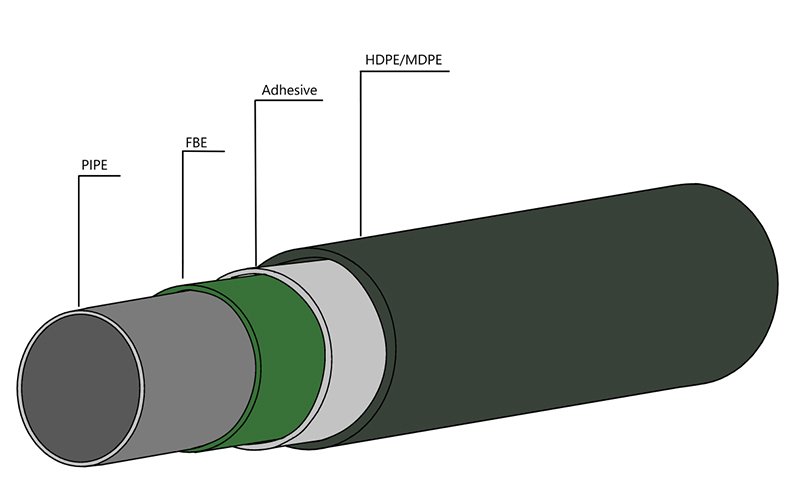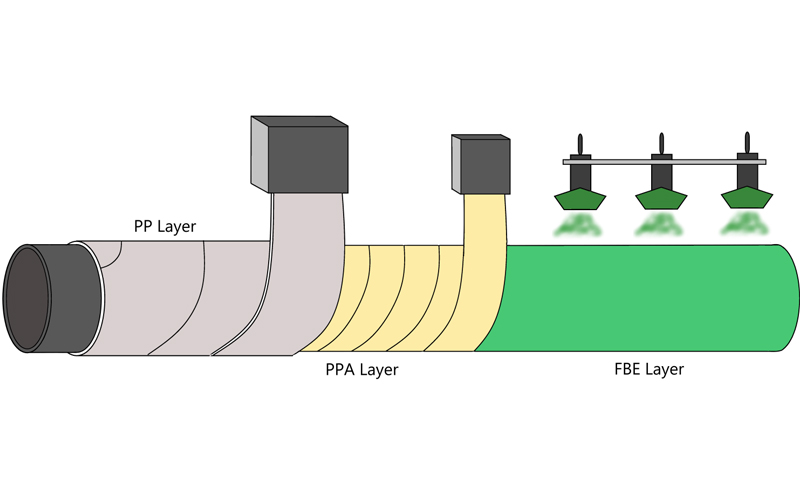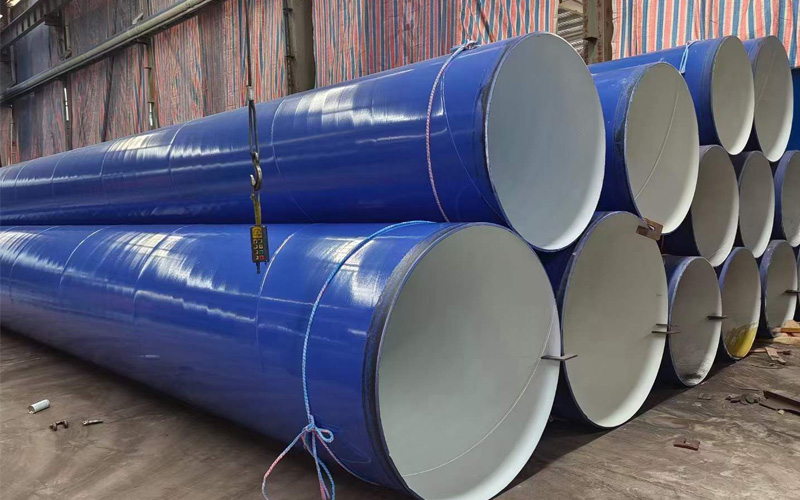Steel Pipe Weight ChartCalculation Guide (Based on Density)
Introduction
In any large-scale piping project, whether for structural or fluid conveyance, project managers and engineers must contend with one core, unavoidable variable: Weight. Pipe weight is the single most critical factor in your project’s budget. It dictates your logistics and shipping costs, determines the crane capacity required for lifting, serves as a fundamental input for structural load calculations, and (most importantly) is the basis for your total procurement cost, as the vast majority of large diameter lsaw pipe and ssaw pipe is sold by the ton. Many in the industry rely on pre-made steel pipe weight charts, but a true professional—an engineer, a project manager, or a technical buyer—must understand how that chart is built. What is the science behind it? And what do you do when your pipe (like a custom-spec 48-inch LSAW pipe) isn’t on the standard chart? This guide provides both. First, we will provide the comprehensive reference charts. Second, and more importantly, we will give you the complete engineering pipe weight formula and explain its foundation: the carbon steel density. This guide will show you how to calculate pipe weight for any pipe, any size, any time.
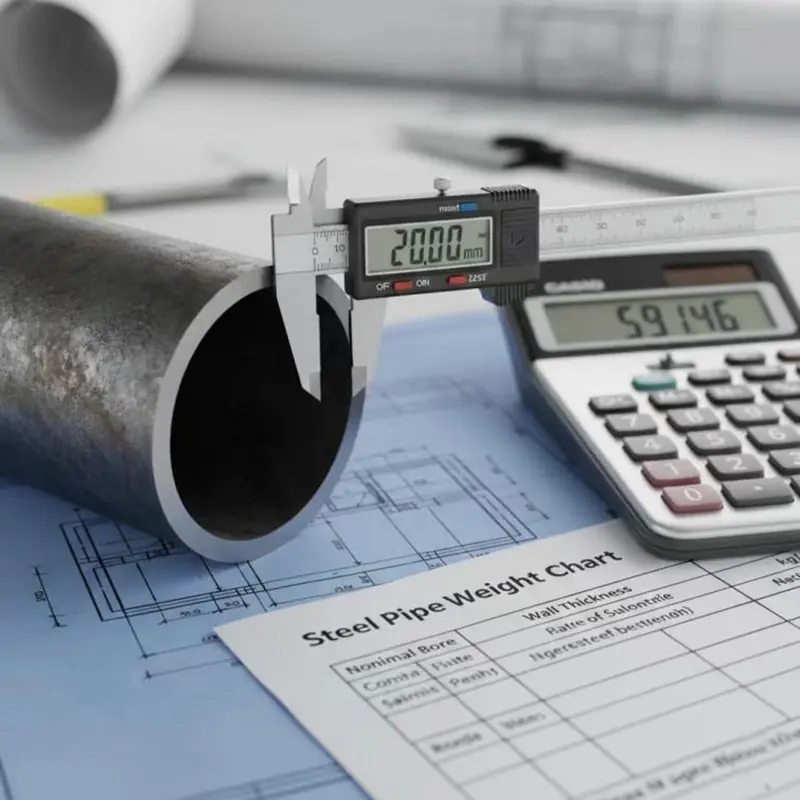
The Constant: Carbon Steel Density
Before any calculation is made, you have to know your constant. The whole weight of the steel pipe are calculated based on the constant density of the steel material itself. Density is just mass per volume. Although there can be slight variations between alloys, the standard density for typical carbon steel (the material used for products such as ASTM A53, API 5L, and structural pipe) is a figure every engineer should have memorised.Here are the two core values you need to memorize:
· Metric: 7850 kg/m³ (or 7.85 g/cm³)
· Imperial: 490 lb/ft³ (or 0.2836 lb/in³)
This constant is the bedrock. Every formula and every number in every standard weight chart is derived from this single value.
The Core Formula: How to Calculate Pipe Weight
This is the most valuable tool in this guide. A chart is a reference, but the formula is a universal tool.
The First Principle: The Logic
The logic for calculating a pipe’s weight is simple. You are not paying for the “hole”; you are only paying for the steel. Therefore, the weight is: Weight = Volume of Steel × Density of Steel.
To find the Volume of Steel, you must first find the Cross-Sectional Area of the steel:
1. Cross-Sectional Area = (Total Area of Outer Circle) – (Area of Inner Hole)
2. Area Formula: A = (π/4) * D²
3. Therefore, Area = [ (π/4) * OD² ] – [ (π/4) * ID² ]
(Where OD is Outer Diameter and ID is Inner Diameter)
4. Since ID = OD – (2 * Wall Thickness), you can substitute this in, but the calculation is cumbersome.
The Engineer’s Formula (The “Magic Number” Method)
To simplify this for daily use, engineers developed a much faster formula that uses the Outer Diameter (OD) and Wall Thickness (WT) directly. This formula approximates the cross-sectional area as π * (OD – WT) * WT and then pre-calculates the geometry (π) and multiplies it by the carbon steel density to create a single “magic number” or conversion factor. This is the pipe weight per foot formula (Imperial) and steel pipe weight per meter (Metric) that professionals use.
Metric Formula (Weight in kg per meter): W (kg/m) = (OD [mm] – WT [mm]) * WT [mm] * 0.0246615
· W: Weight in kg/meter
· OD: Outer Diameter in millimeters
· WT: Wall Thickness in millimeters
· 0.0246615: The “magic number” for metric steel calculation.
Imperial Formula (Weight in lbs per foot): W (lb/ft) = (OD [in] – WT [in]) * WT [in] * 10.69
· W: Weight in lb/foot
· OD: Outer Diameter in inches
· WT: Wall Thickness in inches
· 10.69: The “magic number” for imperial steel calculation.
Building Authority: Where does 0.02466 come from? This isn’t magic; it’s just math. It’s the result of (π/1000) * 7.85, which accounts for converting the density 7.85 g/cm³ to kg/mm³ and applying it to the dimensions in millimeters. A more precise derivation is (OD – WT) * WT * π * (7850 kg/m³) / 1,000,000 (mm²/m²), which simplifies to (OD – WT) * WT * 0.0246615…. Understanding this proves the formula’s authority.
The Reference Tool: Steel Pipe Weight Chart (ASME B36.10M)
While the formula is for calculation, the chart is for speed. The following chart provides the theoretical weight for the most common pipe sizes as defined by the ASME B36.10 standard, calculated using the formula above. This chart is an indispensable tool for engineers and estimators working with standard pipe inventories.
(Note: SCH = Schedule, STD = Standard Wall, XS = Extra Strong, XXS = Double Extra Strong)
| NPS (in) | O.D. (in) | Schedule | Wall Thickness (in) | Weight (lb/ft) | Weight (kg/m) |
| 1″ | 1.315 | SCH 40 / STD | 0.133 | 1.68 | 2.50 |
| 1″ | 1.315 | SCH 80 / XS | 0.179 | 2.17 | 3.23 |
| 2″ | 2.375 | SCH 40 / STD | 0.154 | 3.65 | 5.43 |
| 2″ | 2.375 | SCH 80 / XS | 0.218 | 5.02 | 7.47 |
| 3″ | 3.500 | SCH 40 / STD | 0.216 | 7.58 | 11.28 |
| 3″ | 3.500 | SCH 80 / XS | 0.300 | 10.25 | 15.25 |
| 4″ | 4.500 | SCH 40 / STD | 0.237 | 10.79 | 16.06 |
| 4″ | 4.500 | SCH 80 / XS | 0.337 | 14.98 | 22.29 |
| 6″ | 6.625 | SCH 40 / STD | 0.280 | 18.97 | 28.23 |
| 6″ | 6.625 | SCH 80 / XS | 0.432 | 28.57 | 42.51 |
| 8″ | 8.625 | SCH 40 / STD | 0.322 | 28.55 | 42.48 |
| 8″ | 8.625 | SCH 80 / XS | 0.500 | 43.39 | 64.57 |
| 10″ | 10.750 | SCH 40 / STD | 0.365 | 40.48 | 60.24 |
| 10″ | 10.750 | SCH 80 / XS | 0.500 | 54.74 | 81.46 |
| 12″ | 12.750 | SCH 40 / STD | 0.406 | 53.52 | 79.64 |
| 12″ | 12.750 | SCH 80 / XS | 0.500 | 65.42 | 97.35 |
| 14″ | 14.000 | SCH 40 / STD | 0.438 | 63.45 | 94.42 |
| 14″ | 14.000 | SCH 80 / XS | 0.594 | 85.60 | 127.38 |
| 16″ | 16.000 | SCH 40 / STD | 0.500 | 82.77 | 123.17 |
| 16″ | 16.000 | SCH 80 / XS | 0.656 | 107.50 | 159.97 |
| 18″ | 18.000 | SCH 40 / STD | 0.562 | 104.67 | 155.76 |
| 18″ | 18.000 | SCH 80 / XS | 0.750 | 138.15 | 205.58 |
| 20″ | 20.000 | SCH 30 / STD | 0.500 | 104.13 | 155.00 |
| 20″ | 20.000 | SCH 60 / XS | 0.812 | 167.33 | 249.00 |
| 24″ | 24.000 | SCH 20 / STD | 0.375 | 94.62 | 140.81 |
| 24″ | 24.000 | SCH 40 / XS | 0.688 | 171.28 | 254.88 |
| 30″ | 30.000 | SCH STD (20) | 0.375 | 118.66 | 176.58 |
| 30″ | 30.000 | SCH XS (30) | 0.500 | 157.86 | 234.92 |
| 36″ | 36.000 | SCH STD (20) | 0.375 | 142.70 | 212.35 |
| 36″ | 36.000 | SCH 30 | 0.500 | 189.92 | 282.63 |
| 48″ | 48.000 | SCH STD (20) | 0.375 | 190.79 | 283.90 |
| 48″ | 48.000 | SCH 30 | 0.500 | 253.99 | 377.98 |
Practical Application
The chart above is useful, but what happens when your project requires a non-standard specification? For Allland’s core products—large-diameter LSAW steel pipe and SSAW steel pipe—your specifications are almost always custom. You will never find an “ASME 48-inch SCH 65” pipe. Your spec will be: OD 1219.2mm, WT 20mm. This is where the chart fails, and the formula becomes your most important tool.
Real-World Example: LSAW Pipe Weight Calculation
· Problem: Your project requires 1,000 meters of LSAW pipe with an Outer Diameter of 48 inches (1219.2 mm) and a Wall Thickness of 20 mm. What is the theoretical weight per meter, and what is the total tonnage for your RFQ?
· Data (Metric):
OD = 1219.2 mm
WT = 20 mm
· Formula:
W (kg/m) = (OD – WT) * WT * 0.0246615
· Calculation:
4.1 W = (1219.2 – 20) * 20 * 0.0246615
4.2 W = (1199.2) * 20 * 0.0246615
4.3 W = 23984 * 0.0246615
4.4 W ≈ 591.46 kg/meter
· Total Tonnage:
4.5 Total Weight = 591.46 kg/m * 1,000 meters
4.6 Total Weight = 591,460 kg
4.7 Total Tonnage = 591.46 Metric Tons
Now you can confidently send your RFQ to Allland for 591.46 tons of 1219.2mm x 20mm LSAW pipe, and you will get a precise, competitive quote based on that tonnage.
Engineer’s Note: Theoretical vs. Actual Weight
Here again, this final tip is what distinguishes a professional buyer from a novice. So, the weight you have just worked out is the theoretical weight. This is the weight for the “nominal” dimensions (the name of the pipe). Actual weight refers to the real weight of the pipe if you were to place it on a scale. They are not same because every manufacturing standards ( ie API 5L for LSAW ) allows a little bit variation or tolerance in the final product. For Example : 20mm wall thickness can have -5% / + 10% manufacturing tolérance. This means the wall at any point may be as thin as 19mm or as thick as 22mm. This is a critical difference, especially with regard to cost: The Theoretical Weight is applied for designing, engineering and initial pricing purpose. Actual Weight (scale weight) The actual weight of the pipe (scale weight which is reported on the mill test certificate) is often utilized for billing and invoicing particularly when final due is decided based on fairness and transparency.
Conclusion
The foundation of all steel pipe weight calculation is the physical carbon steel density—a constant of 7850 kg/m³ (490 lb/ft³). From this constant, we get two critical tools: the Steel Pipe Weight Chart for quick reference of standard sizes, and the universal Pipe Weight Formula for all custom and large-diameter projects. W (kg/m) = (OD – WT) * WT * 0.02466 is the engineer’s most powerful tool for this task. As a specialized manufacturer of LSAW steel pipe and SSAW steel pipe, Allland understands that precise tonnage calculations are the foundation of your project’s budget. A proper weight calculation is the beginning of everything, a control on your logistics, engineering, and most important your total buying cost. Contact our technical team today with your precise requirements and we will issue a comprehensive quotation on the basis of an exact theoretical weight, enabling you to project with certainty.
Share:
Get Your Custom Steel Pipe Quote Today!
Provide us with your project details (like application, specifications, quantity). Our experienced team will respond with a tailored solution and competitive quote within 24 business hours.
Related Articles
ASTM A53 vs. API 5L: A Guide to Selection and Application
Introduction:Technology differences determine success or failure, and selection needs to be “precise”
Steel Density Analysis: Core Differences between Mild and Medium Carbon Steels and Industrial Applications
3LPE coated steel pipe: a solid barrier in the field of industrial corrosion protection
3LPP coated pipe: anti-corrosion guard in high temperature and high pressure environment
FBE steel pipe: the technological armor of the steel defense line
HOT TAGS
latest posts
- How LSAW/SSAW Steel Pipes Ensure Safe & Durable Drinking Water Pipelines
- LSAW steel pipe vs ERW steel pipe: Unveiling Core Process Differences in Steel Pipe Welding from Arc to Current
- The Essential Guide to High Pressure Pipe Applications
- API 5L Grades Explained: X52, X65 & X70 Meaning?
- A Guide to Offshore Steel Pipe & Tubes for Subsea Projects




